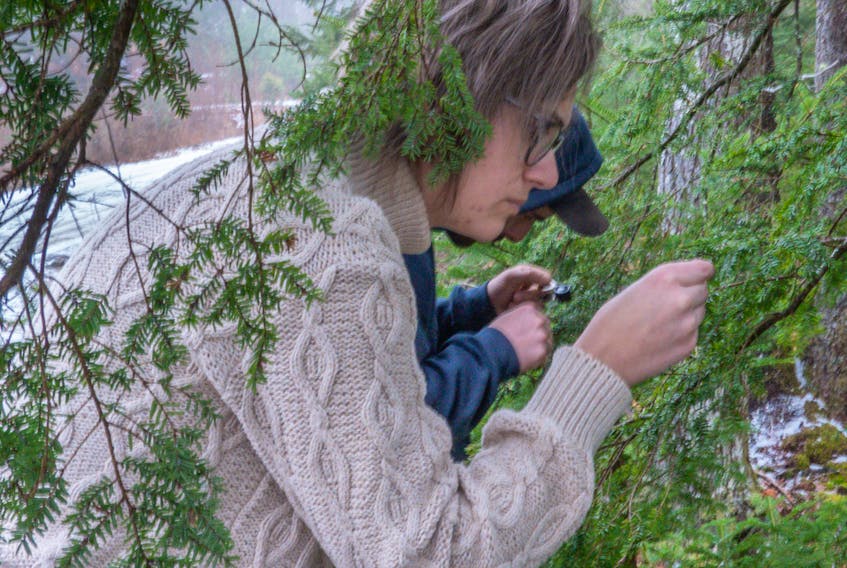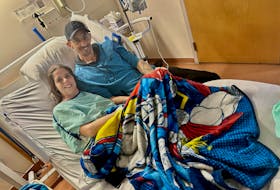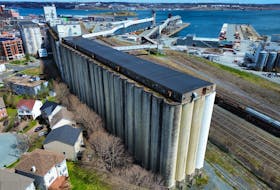South West Nova Scotia - A nasty insect that survives by sucking the sap from certain evergreens is spreading among hemlock trees in the province.
Colin Gray, a field researcher with the Mersey Tobeatic Research Institute in Queens County, says the seriousness of the hemlock woolly adelgid (HWA) and its eventual spread across Nova Scotia depends on how much people value hemlock.
“HWA is here and it's not going away. We can passively sit back and watch it slowly wipe out most of our last remaining true old-growth forest or we can try to come up with ways to slow it down and possibly prevent it from taking out entire stands,” he said.
Sandra Phinney and Barrie MacGregor hosted a workshop with Gray at their home in Canaan on Jan. 5.

MacGregor says at least 50 per cent of the trees in their front yard are hemlock and the pest is attacking them
“I have some trees that are already failing,” said MacGregor.
“Part of the reason we’re holding the session here is it saves going on a (long) field trip. People will be able to just walk up our driveway.”
Gray says the demand for hemlock has never been high in comparison to spruce/fir for pulp, red spruce and white pine for lumber, so Nova Scotia is blessed with numerous old groves of hemlock.
“Many of these areas were difficult to get to in the past and because of their low commercial value were left untouched. Many steep ravines have wonderful old-growth hemlock for example. The commercial value may be low but as a foundation species its ecological value is very high.”
HWA is now active in five southwest counties and Gray says at this point it’s difficult to say with any certainty how fast it is moving. The pest was detected in 2017. A working group was formed at that time and has been meeting regularly ever since. The group consists of professional foresters, entomologists, ecologists and others from various government departments and non-government organizations.
Solutions like biocontrols, insecticides and silviculture are all on the table, says Gray, but there are a lot of hoops and loops to get through first.
Gray adds that one of the best ways to get mobilized and take action is to get the public on board. The Mersey Tobeatic Research Institute has taken on the task of outreach to promote awareness and co-operation from local communities, land owners and wilderness trippers for early detection, monitoring and controlling HWA, including compliance with firewood and log movement restrictions.

Volunteers are also being trained to become "citizen scientists" to assist with HWA early detection in remote hemlock stands with hopes of developing annual re-sampling surveys.
“Paddlers in southwest Nova can act as eyes on the ground or in this case in the trees. Our intention is to train these interested individuals to recognize HWA and photograph and report its location if detected. Surveys that turn up negative results are just as important, we need to know of its absence as much as we need to know of its presence,” said Gray.
He adds that knowing when it first appears is important. Also pertinent information is how quickly it spreads, how many trees are infested each year and the decline of the overall health of the stand from year to year is all pertinent information.
How to help
For more information on becoming a citizen scientist in the control of the hemlock woolly adelgid, call 902-682-2371 (phone) or email









